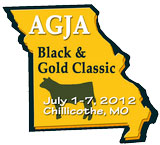RACINE, Wis. ̶ “You can’t have a conversation about hay production and not mention the weather,” says Dr. Kevin Shinners, Professor of Agricultural Engineering at the University of Wisconsin-Madison. As with any agricultural crop, that’s the No. 1 challenge every producer faces. But with hay and haylage, weather problems can be even more acute, because of the extended field drying time often required.
There are important steps producers can take to dry hay faster. “One of the most important steps is to utilize the sun’s energy to the maximum extent possible,” Shinners adds. “At cutting, lay that crop down as wide as you possibly can so that almost every square foot is occupied by drying crop. Anything you can do to get that crop to dry quicker so you can get it out of the field and miss a rainstorm, that’s money well spent.”
Shinners says a mower conditioner is a good tool to speed dry down. “Engineers have done decades of studies that show the advantages of mechanically conditioning the stem and what it does to improve drying rates,” he continues. “A mower conditioner also gives you flexibility to produce either dry hay or haylage. It’s a great tool in your arsenal for better quality forage.”
Mechanically Condition Haylage
Shinners admits his recommendation to always mechanically condition haylage is currently controversial. “Some people suggest that by not conditioning the crop, they can slow the drying rate down and once it reaches the ideal chopping moisture content, it’ll stay there for a longer period of time.
“However, without conditioning, the crop will take longer to get to the optimum moisture content, and you put the crop at risk of weather damage. I’m a proponent of conditioning at all times,” he explains. “With conditioning, you shorten the period of time to get to the optimum moisture content, so we can get that crop off the field, ensiled and protected.”
High Productivity Equipment
According to Shinners, there are three keys to quality hay and haylage: cut it at the right stage of maturity; dry it as quickly as possible; and be gentle on the crop. He cautions growers to avoid tedding or raking at times when the leaves are brittle.
“Progressive dairies are recognizing that the way to maintain forage quality is to have high productivity harvesting equipment. When the weather is right and the crop is mature, you can’t plod along like Grandpa did. You need high productivity equipment to get through those acres as quickly as you can, and get into the next growing cycle. In Wisconsin, they’re trying to cut haylage on a 28 to 30-day cutting cycle to have more uniform crop quality and higher quality forage,” Shinners notes.
Brett DeVries, Case IH Hay and Forage Marketing Manager, says it’s a similar story for commercial hay producers in the Western United States. “There, the rule of thumb is guys have to be able to get it cut and baled in three to four days – and they need the equipment to do that. On the irrigated land, they need to get the crop off as quickly as possible so they can irrigate and stay on schedule to optimize the number of cuttings.”
Shinners reminds growers to make sure the conditioning rolls are set up correctly, to reduce the mechanical resistance of the moisture leaving the plant. “The roll clearance needs to be set so that the stem is cracked every three to four inches to open up routes for water to exit the plant.”
Reliability is Key
With hay acreage dwindling and prices high, both Shinners and DeVries cite equipment reliability as another major factor in optimizing productivity. “Especially for larger producers and custom harvesters,” Shinners says. “You can’t have workers sitting at the edge of the field waiting for the harvester to get back up. You need the assurance that when the crop is ready, the weather is right and the labor is there, they can get to work.”
DeVries agrees: “Hay producers can’t afford to lose a half-day. You can decrease the value of the crop significantly, so reliable equipment is huge.”





